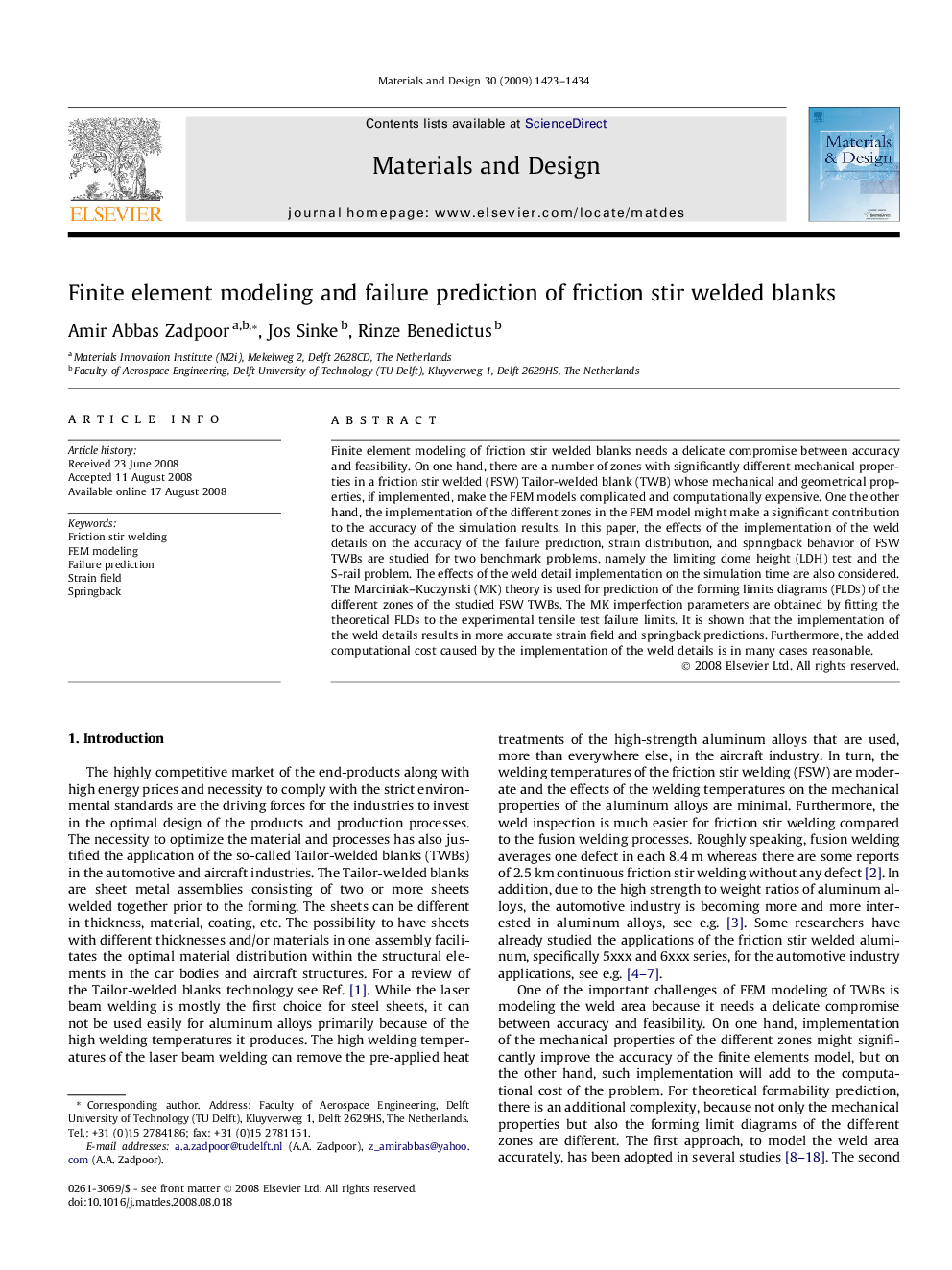| Article ID | Journal | Published Year | Pages | File Type |
|---|---|---|---|---|
| 832758 | Materials & Design (1980-2015) | 2009 | 12 Pages |
Finite element modeling of friction stir welded blanks needs a delicate compromise between accuracy and feasibility. On one hand, there are a number of zones with significantly different mechanical properties in a friction stir welded (FSW) Tailor-welded blank (TWB) whose mechanical and geometrical properties, if implemented, make the FEM models complicated and computationally expensive. One the other hand, the implementation of the different zones in the FEM model might make a significant contribution to the accuracy of the simulation results. In this paper, the effects of the implementation of the weld details on the accuracy of the failure prediction, strain distribution, and springback behavior of FSW TWBs are studied for two benchmark problems, namely the limiting dome height (LDH) test and the S-rail problem. The effects of the weld detail implementation on the simulation time are also considered. The Marciniak–Kuczynski (MK) theory is used for prediction of the forming limits diagrams (FLDs) of the different zones of the studied FSW TWBs. The MK imperfection parameters are obtained by fitting the theoretical FLDs to the experimental tensile test failure limits. It is shown that the implementation of the weld details results in more accurate strain field and springback predictions. Furthermore, the added computational cost caused by the implementation of the weld details is in many cases reasonable.
